Top 10 Insanely Cheapest Places To Travel In Canada Today
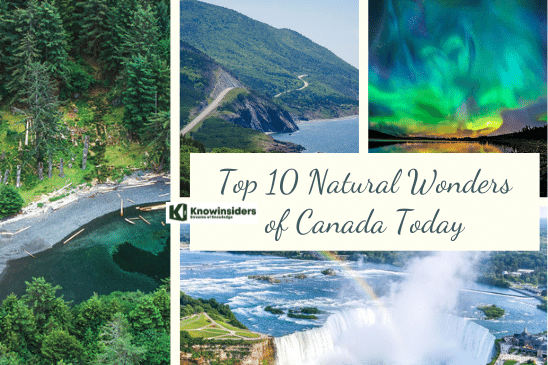 Top 10 Most Breathtaking Natural Wonders in Canada Top 10 Most Breathtaking Natural Wonders in Canada |
 Top 11 Scariest Haunted Houses In Canada With The Ghost Story Top 11 Scariest Haunted Houses In Canada With The Ghost Story |
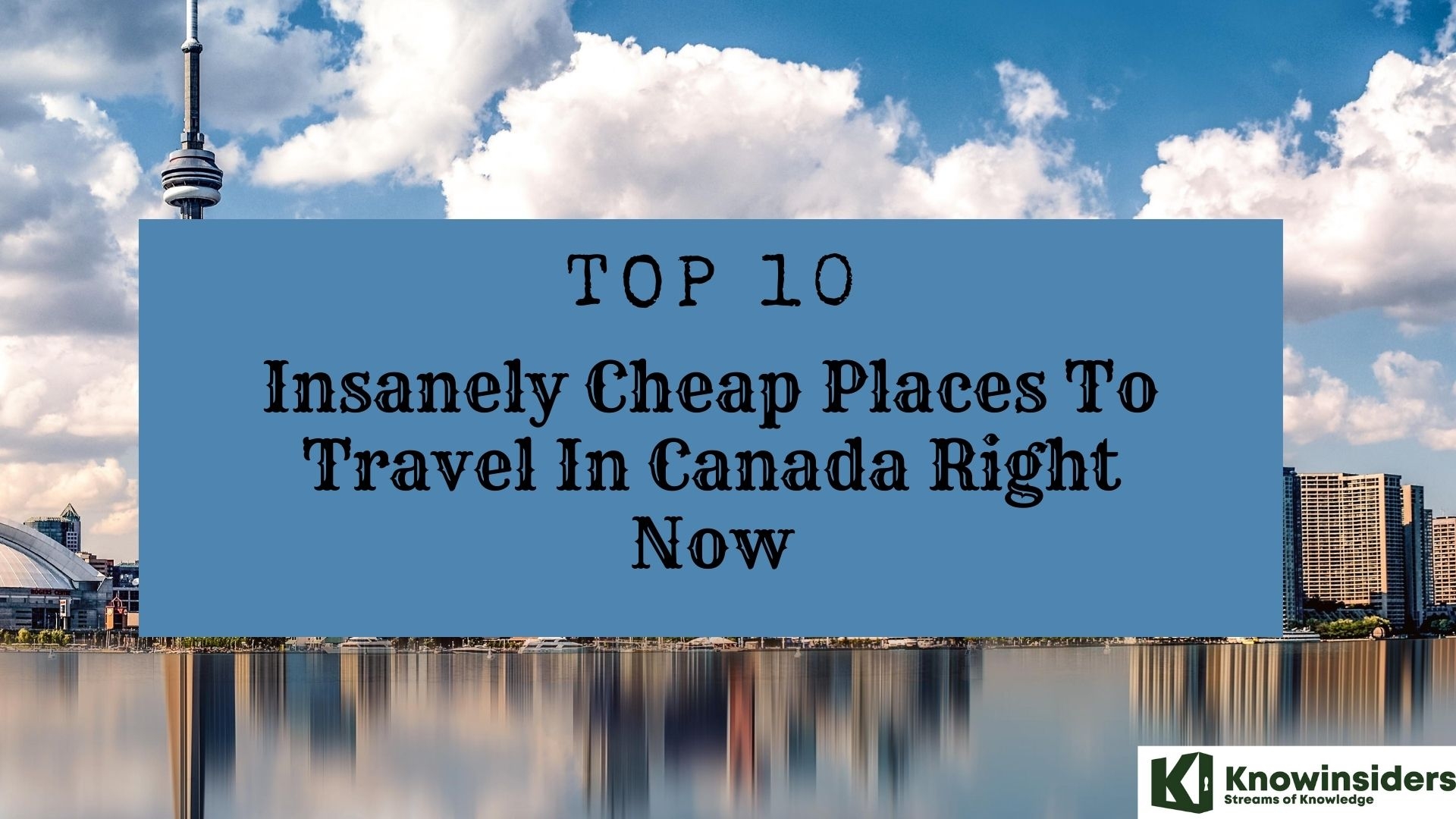 |
| Top 10+ Insanely Cheap Places To Travel In Canada Right Now |
| Table Content |
From the cosmopolitan streets of Toronto to the snowy peaks of the Canadian Rockies, our northern neighbor offers a broad range of vacation opportunities. It can be difficult to decide which one is ideal for your next holiday.
If you have some vacation time saved up, now is the time to see what Canada has to offer if you've never had the chance before, thanks to these cheap spots to visit.
Reasons to visit Canada
The breadth of Canada's natural beauty, from mountains and glaciers to secluded lakes and forests, is almost unrivaled in the world. But it's not just the great outdoors that draws people to Canada. Canada has clean, safe, friendly, and multicultural cosmopolitan cities. Indeed, Canada is frequently cited as one of the world's most livable countries. Whether you enjoy river rafting or live theater, Canada will not disappoint.
Cities that are spectacular
There are many modern, multicultural cities in Canada, each with its own distinct personality. Toronto, Montreal, and Vancouver are perhaps the most well-known, but there are numerous others that highlight various aspects of Canada, such as its maritime culture, mountainous landscape, French history, or indigenous people. Each city is delightful for a variety of reasons.
Furthermore, Canadian cities are generally much smaller than their American counterparts, making them easy to navigate. Even in large cities, Canadians are generally friendly to strangers, and crime is low.
Although it's unlikely you'll be able to visit all of them in a single trip, these are the most popular tourist destinations in Canada:
For years, Vancouver, British Columbia, has been a hot spot in Canada in terms of the number of people who want to live there. It's no surprise. It's on the water and next to a mountain range, so it's picture-perfect. Furthermore, in a country where winter can be harsh, Vancouver has a temperate climate with little snow and an early spring. The disadvantages include a lot of rain and a scarcity of housing despite high prices.
Calgary, Alberta, is most famous for the Calgary Stampede, an annual rodeo that draws over a million people each July. Calgary serves as a natural entry point to the Rocky Mountains.
The Horseshoe Falls in Niagara Falls, Ontario, are the most powerful waterfall in North America and possibly the best-known in the world. Although the city is very touristy, there are more charming places nearby.
Toronto, Ontario, is Canada's largest and busiest city, and it is frequently mistaken for the country's capital. The metropolitan area's nearly 6 million residents are a diverse mix of ethnicities, including English, Chinese, East Indian, Irish, Scottish, and Italian. Toronto is one of the world's most multicultural cities, vibrant and textured.
Ottawa, Ontario, is Canada's capital and seat of government. The city exudes a sophisticated yet welcoming atmosphere.
Montreal, Quebec, is Canada's second largest city, but it is also the country's cultural capital, with a diverse range of festivals and museums. It has a European feel to it and a liberal personality. Much of the city's historic core has been preserved and is a popular tourist attraction.
Because of its location, architecture, and level of historical preservation, Quebec City, Quebec, is a stunning city. French is even more common here than in Montreal, though most people you'll meet as a visitor will also speak English.
Halifax, Nova Scotia, exemplifies everything good about the Maritimes (three provinces in Eastern Canada that all border the Atlantic Ocean): friendly, down-to-earth, fun, affordable, and scenic.
Victoria, British Columbia, has a rich English history that dates back to the 1840s when the city was founded as a trading port, but it also has a deeper history as an aboriginal community.
Affordability
Canada is an inexpensive vacation destination. Because the Canadian dollar has historically been worth slightly less than the US dollar, prices in Canada appear to travelers to be reasonable.
Outdoor Recreation
One of the best reasons to visit Canada is to enjoy the fantastic outdoors—and there is plenty of it. Canada is the world's second largest country, but its population is relatively small. Consider that the United States has roughly nine times the population of Canada on a slightly smaller land mass. Canada has vast uninhabited land that allows Canadians and visitors to roam freely. Camping, skiing and snowboarding, golfing, fishing, hiking, mountain biking, climbing, kayaking, and canoeing are among the most popular outdoor activities in Canada.
All-Year Charm
While many Canadians flee to warmer climates in the winter, skiers and other winter enthusiasts from around the world flock to the country. Canada is well-known for its "northern" attractions, but it's not all igloos and snowcaps. Spring, summer, and fall each have their own allure that add to Canada's allure.
Of course, because Canada is so vast, the weather varies greatly, allowing for a diverse range of activities all year.
Western Canada, including Vancouver, has a relatively mild climate with little snow and an early spring. In comparison, Montreal has long, cold winters with plenty of snowfall. It definitely pays to be informed about your destination and what to expect in terms of weather.
Family-Friendly
Canada's relaxed attitude and wide range of outdoor activities and events make it an ideal destination for families traveling with children. Hiking, skiing, and snowboarding, as well as attending the Quebec Winter Carnival or the Calgary Stampede, are all enjoyable activities for the entire family on a Canadian vacation with children.
What are the insanely cheapest places to travel in Canada today?
(Top 10 - Ranked by KnowInsiders)
1. Radium Hot Springs, B.C.
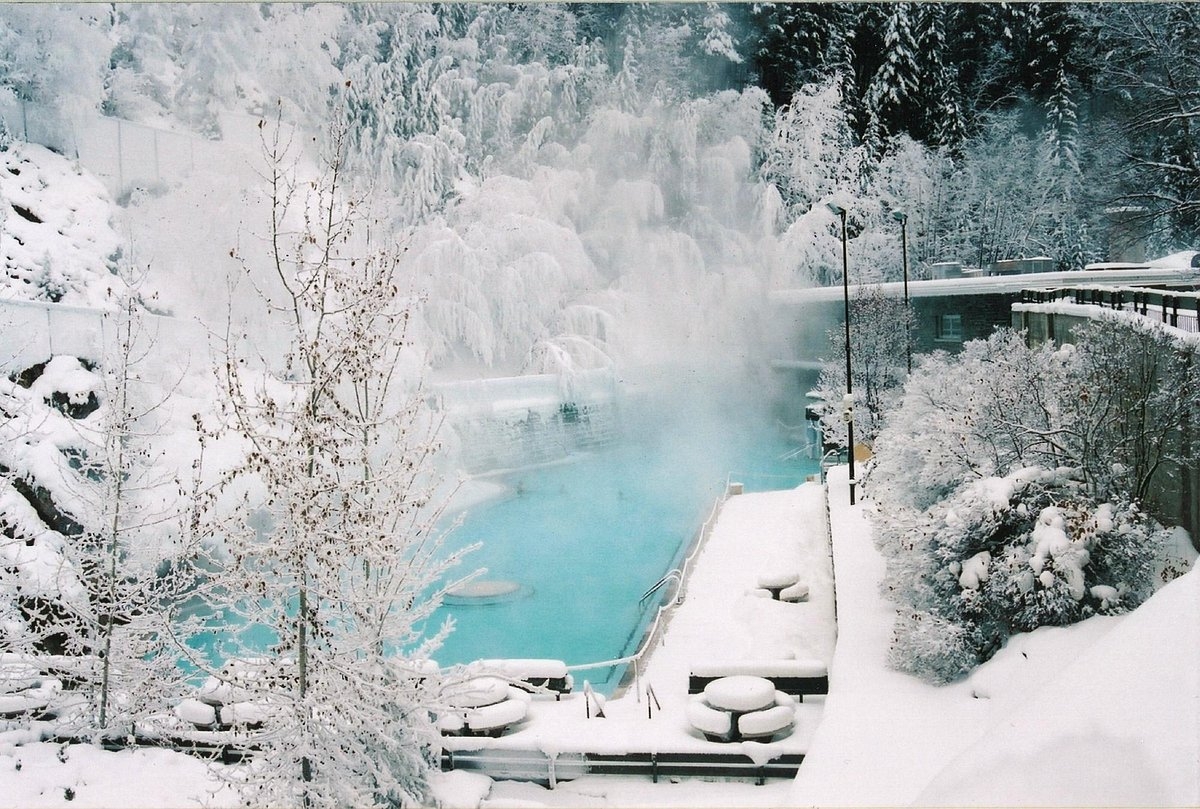 |
| Photo: TripAdvisor |
A village of 1,339 people, Radium Hot Springs—also known as Radium—is located in British Columbia's East Kootenay region. The hot springs in the close-by Kootenay National Park are the source of the village's name. It is reachable from Banff, Alberta, via Highway 93.
When radon, a byproduct of radium decay, was discovered in minute amounts in the water after an analysis of the hot springs, it was decided to name them after the radioactive element. The radiation exposure from using the pools is negligible; for a half-hour of bathing, it is about ten times higher than background levels at 0.13 millirems (1.3 Sv) from the water. The amount of radon in the air is approximately 23 picocuries (0.85 Bq) per litre, which is above the threshold (4 picocuries per litre) at which mitigation is required in homes but is also negligible (roughly 0.7 mrem or 7.0 Sv for a half-hour bathing) from the perspective of dose impact.
The hot springs complex itself is just outside the national park and has two sizable pools: one is a 25-meter swimming pool with water that is typically around 29 °C (84 °F) and the other is a hot tub with water that is typically around 39 °C (102 °F) for soaking. In addition, there is a hot-tub-sized pool that has earned the nickname "Plunge Pool" due to the fact that the water can be either hot (starting at the source at 44 °C; 111 °F) or cold (starting from a creek that runs beneath the pools).
Accommodation: $55/night
Food and drink: $40
Activities: $33 in winter / from $133 in summer
Radium Hot Springs is a year-round, reasonably priced vacation spot that is a naturalist's paradise. The hot springs themselves are located in Kootenay National Park, and Radium and the surrounding areas offer a variety of outdoor pursuits. In the winter, you can skate the Lake Windermere Whiteway for a small $5 donation or ski or snowboard nearby at Panama (and get a cheap nighttime lift ticket). Spend some money and raft the Rockies or paddle the Columbia River with Kootenay River Runners if you're in town during the warmer months. Mountain goats can be seen virtually everywhere.
2. Muskoka Lakes
 |
| Photo: Muskoka Tourism |
The three large lakes of Muskoka—Lake Muskoka, Lake Rosseau, and Lake Joseph—are located in this township. Joseph Rousseau, a member of a trading family in the late 1800s, was connected to William Robinson, a trader who operated out of Newmarket and maintained trading posts close to Bracebridge and on Yoho Island. Mr. Robinson later changed his name to Hon. William Robinson, served as a representative for the Simcoe riding in the House of Assembly, and was appointed Commissioner of Public Works. The three lakes have Mr. Robinson's names. In honor of his friend Joseph Rousseau, he gave the names Lake Joseph and Lake Rosseau. After the Native Americans who yearly camped at Indian River, he gave Lake Muskoka their name. The name Muskoka was derived from the Chippewa chief Mesquas Ukee. The deepest water in the area is found in Lake Joseph, where the depth is roughly 93.8 meters. 5,430 permanent residents and 24,053 seasonal residents called the area home in 1991.
Canada's Muskoka, Ontario - Numerous times, the region two hours north of Toronto has been ranked as one of the top tourist destinations in the country. Over the years, our quaint and endearing area, also known as Canada's cottage country, has received a lot of praise as one of the best vacation destinations in both Canada and the entire world.
Families should visit Santa's Village, where kids and parents can "be an elf for a day." Santa Claus's summer residence is Santa's Village, which is located on the 45th Parallel along the Muskoka River. Santa's Village is enjoyable for the whole family and will make your child's face permanently smile! Visit Santa and tell him what you want for Christmas while getting a fantastic family picture for the mantle.
Aside from vacations with the family, Muskoka is one of Canada's most romantic destinations. Couples enjoy waking up near a lake to the sound of loons so they can enjoy their morning coffee while gazing out at Muskoka's renowned crystal-clear waters. Your romantic getaway can be both relaxing and adventurous with all the activities you and your partner can partake in while you're there.
Ten museums that highlight the fascinating history of the region are available in Muskoka for history buffs. The Muskoka Steamships and Discovery Centre provides a window into the long history of building wooden boats as well as the storied past on the lakes. Another fascinating trip through time can be found at the Muskoka Heritage Place. For a stunning view of Fairy Lake, be sure to ride the Portage Flyer, the smallest commercial railroad in the world, down its 1 1/8-mile track.
You can explore dozens of trails on land, with the Huckleberry Rock Lookout Trail being one of the most well-liked. The 2.5 km hike results in one of Muskoka's most breathtaking views, and these rocks are among the oldest in the world (well over a billion years old). Another wonderful location to explore is Georgian Bay Island National Park. The only national park in Muskoka is nestled among the renowned 30,000 islands, the largest freshwater archipelago in the world. It offers a dozen different hiking trails, bike rentals, and countless photo opportunities. Awe-inspiring scenery includes the untamed Canadian Shield, a rich mosaic of forests, and the recognizable wind-swept pines. You can take the DayTripper from Honey Harbour to the island for the scenic 15-minute boat ride. The island is only accessible by boat.
3. Windsor, Ontario
 |
| Photo: Getty Images |
Windsor is a city in southwestern Ontario, Canada, on the south bank of the Detroit River directly across from Detroit, Michigan, United States. Geographically located within but administratively independent of Essex County, it is the southernmost city in Canada and marks the southwestern end of the Quebec City–Windsor Corridor. The city's population was 229,660 at the 2021 census, making it the third-most populated city in Southwestern Ontario, after London and Kitchener. The Detroit–Windsor urban area is North America's most populous trans-border conurbation, and the Ambassador Bridge border crossing is the busiest commercial crossing on the Canada–United States border.
Windsor is a major contributor to Canada's automotive industry and is culturally diverse. Known as the "Automotive Capital of Canada", Windsor's industrial and manufacturing heritage is responsible for how the city has developed through the years.
Windsor tourist attractions include the Windsor International Film Festival, Caesars Windsor, a lively downtown club scene, Little Italy, the Windsor Symphony Orchestra, the Art Gallery of Windsor, the Odette Sculpture Park, Windsor Light Music Theatre, Adventure Bay Water Park, and Ojibway Park. As a border settlement, Windsor was a site of conflict during the War of 1812, a major entry point into Canada for refugees from slavery via the Underground Railroad and a major source of liquor during American Prohibition. Two sites in Windsor have been designated as National Historic Sites of Canada: the Sandwich First Baptist Church, a church established by Underground Railroad refugees, and François Bâby House, an important War of 1812 site now serving as Windsor's Community Museum.
Accommodation: $60/night
Food and drink: $44
Activities: Free
Windsor is a hidden gem of a city if you're looking for somewhere with more of a bustling vibe. It has a respectable food and drink scene, as well as nightlife that is ideal for all budget travelers, but is frequently overlooked. Enjoy some local arts and culture, visit the casino, take in the Detroit skyline while strolling along the river, and eat to your heart's (and stomach's) content. If visiting Detroit is also on your bucket list, it's only a short hop across the border.
4. Carleton-sur-Mer, Quebec
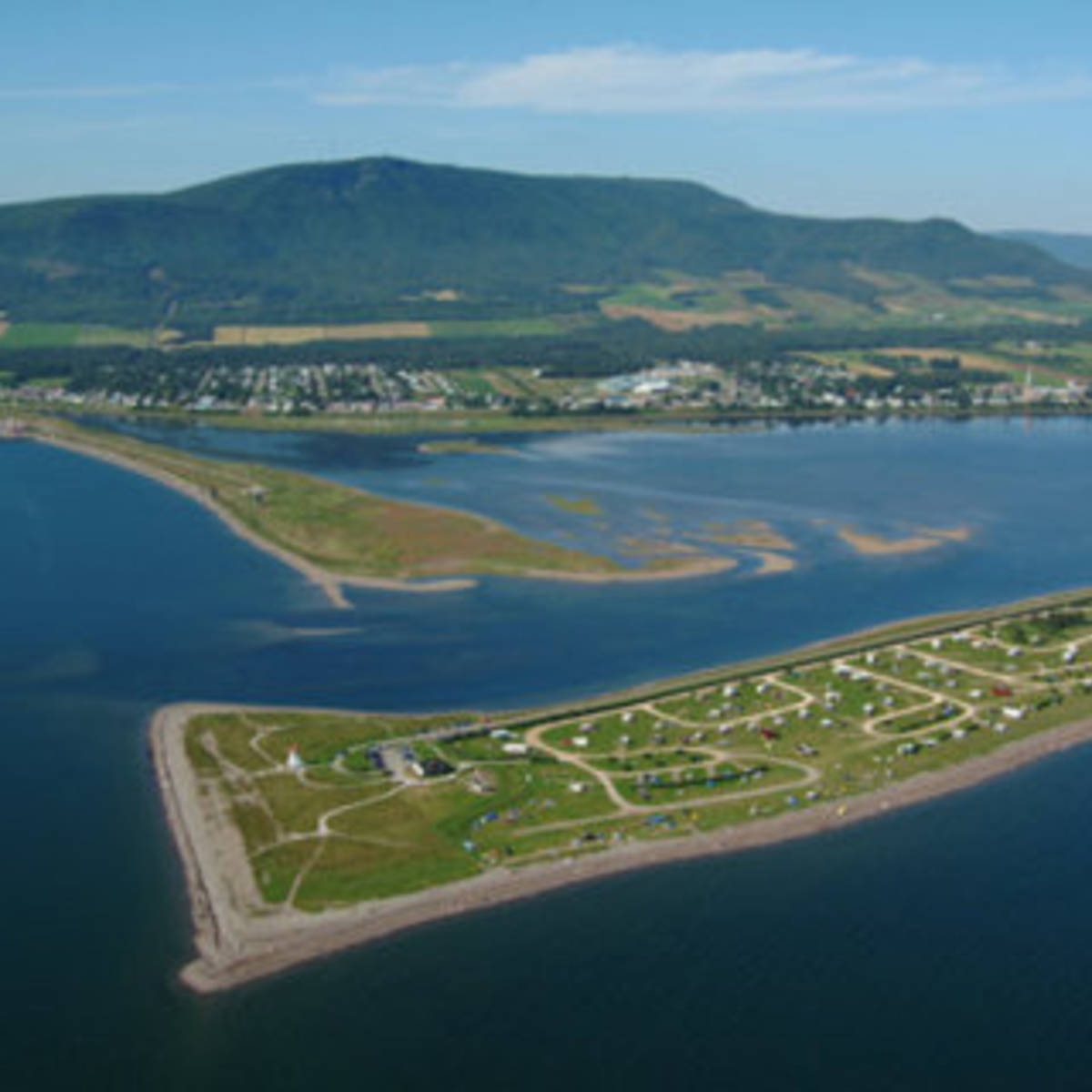 |
| Photo: Bonjour Quebec |
Carleton-sur-Mer, a town long recognized as a resort area, offers a variety of experiences in a setting nestled between sea and mountains. City dwellers and pilgrims began to appreciate the distinctive landscapes and real people found here by the middle of the 19th century. This trend has grown over time, and today this town is one of the most popular tourist destinations in the area.
A culinary paradise
Here, eating well is customary. When it comes to fine dining, Carleton-sur-Mer is one of the most international small towns in Québec thanks to the prominence given to French, Italian, Japanese, and Moroccan cuisine. Take pleasure in fine chocolates, fresh bread, coffee, and other locally produced treats.
St. Joseph's Mountain
A breathtaking view of the sea and mountains is waiting for you at the top of this mountain, which can be reached on foot, by bicycle, or by car. Additionally, you can go to the Notre-Dame oratory, a Breton-style chapel constructed in 1935 and home to stunning mosaics and stained-glass windows.
Trails
You can hike or ride a bicycle to the tops of the Mont Saint-Joseph (555 meters) and Mont Carleton (613 meters) thanks to a network of connected, safely constructed trails with numerous lookouts.
The Arts Quarter
Under one roof, this lovely cultural center houses a theater, an art gallery, a library, and a performance space.
Boardwalk by the seaside next to the sand in Parc des Horizons
The summer season sees cultural events offered at Parc des Horizons, which is situated in a popular tourist area. Along the public beach, a boardwalk leads to Rue du Quai. Take a stroll alongside the water and take a break to take in the views of the ocean.
Tracadigache Point
This point, which is at the end of Avenue du Phare, is the perfect place to take in the lighthouse and stunning sunsets. This is the ideal location for a picnic in the summer, storyteller storytelling, or nature talks.
Campground
The municipal campground boasts a stunning view of the mountains and Chaleur Bay and is perfectly situated on a point that juts out into the water. Take advantage of a sizable discount during the off-peak period to take pleasure in the renowned tranquility of this location.
Bike routes
From Pointe Tracadigash to Route du Quai and the municipal beach, a 6-km-long network of bike lanes runs along the Carleton Barachois.
Putting green
A good round of golf is the ideal way to spend a vacation, right? This 18-hole golf course, which is nestled between the sea to the south and a mountain to the north, is a golfer's paradise for both amateur and expert players.
Wharf
The end of the wharf has been improved for recreational fishing since 2020. Along with the locals, storytellers, musicians, and artists bring life to this extraordinary place. Follow Rue du Quai to get to the wharf.
Hotel: $45 per night
$50 for food and beverage
Sports: $9 per day
It's like vacationing at a southern beach resort without the cost or five-hour flight when you visit this beachside community along the Baie des Chaleurs. Enjoy the sun safely on the white sand beaches or hike through Mont-Saint-Joseph's trails to see breathtaking views of the bay. Visit the neighborhood microbrewery for a snack before finishing the day by spending the night in a yurt over the water.
5. Niagra Falls
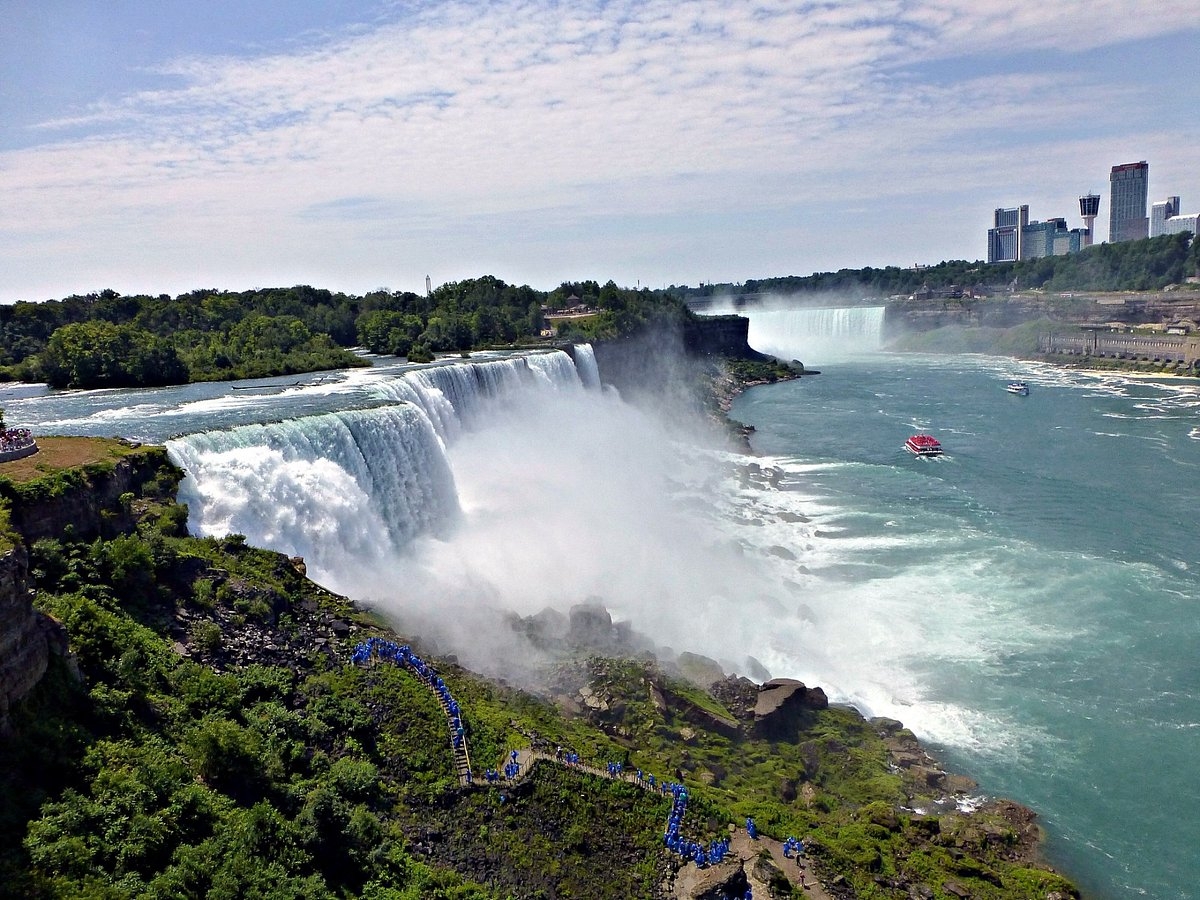 |
| Photo: TripAdvisor |
Ontario, Canada is home to the city of Niagara Falls. It is located in Southern Ontario's Golden Horseshoe region on the western bank of the Niagara River and had an estimated population of 88,071 in 2016. It is a part of the Census Metropolitan Area (CMA) for St. Catharines and Niagara. The city, which was founded on June 12, 1903, is located across the river from Niagara Falls, New York. At this location, the Niagara River flows over Niagara Falls, creating a natural spectacle that draws millions of visitors each year.
There are observation towers, high-rise hotels, gift shops, museums, indoor water parks, casinos, and theaters in the tourist area close to the falls, most of which have bright neon billboards and advertisements. Golf courses, parks, War of 1812 historical sites, and residential neighborhoods are other areas of the city.
There aren't many sights as magnificent and breathtaking as Niagara Falls! The Falls, which are shared by the United States and Canada and are situated in a strait between Lake Ontario and Lake Erie, have grown in popularity as a destination for honeymooners and families alike. From vantage points along the American and Canadian sides of the Niagara River, you can see the Falls year-round. However, a summer night visit to Niagara Falls, Canada, will reveal a spectacular display of lights and fireworks. Young and old are equally impressed by the roar of the Falls and the gently cooling mist. There aren't many sights as stunning and majestic as Niagara Falls. The Falls, which are shared by the United States and Canada and are situated in a strait between Lake Ontario and Lake Erie, have grown in popularity as a destination for honeymooners and families alike.
Best Time To Travel: Niagara Falls offers excitement every day of the year; each season offers different opportunities for visitors to take advantage of. The busiest travel seasons are from late June to just after Labor Day, nearly all holiday long weekends, and the winter vacation periods. Even though prime time is busier, it also has the best weather (mid-80 degrees), amazing views of the Falls in the sun, and almost every tourist attraction is open for enjoyment by all. The spring, fall, and winter seasons provide a calm atmosphere to experience Niagara Falls at a comfortable pace without all the long lines, allowing you to avoid some of the busy prime time crowds.
6. Cochrane, Alberta
 |
| Photo: Cochrane. ca |
Cochrane is a town in Alberta, Canada's Calgary Metropolitan Region. Along Highway 1A, the town is situated 18 kilometers (11 miles) west of the Calgary city limits. With a projected population of 32,199 in 2021, Cochrane will rank among the largest towns in Alberta and one of the fastest-growing communities in all of Canada. It is a member community of the Calgary Metropolitan Region Board (CMRB) and a census metropolitan area of Calgary. Rocky View County encircles the community.
Cochrane is located in the Bow River Valley at the foot of Big Hill. It is located at a height of 1,186 m (3,891 ft). Highway 1A and Highway 22 pass through the town. Walking down the streets, especially Main Street, one can easily sense Cochrane's reputation for its western culture. The town is a well-liked destination for windsports, golfing, hiking, and other adventure activities, as well as for ice cream and coffee in its charming western-themed shops.
There is a small industrial area in Cochrane as well. Lumber, construction, retail, and agriculture (ranching) are all significant industries. It is noteworthy for being one of the very few Canadian communities without a business tax.
Local cyclists use the hill as a training ground as well, taking advantage of its 7% grade and 3.5 km (2.2 mi) length.
Hotel: $49 per night
$34 for food and beverage
$59 for activities
View the Rockies and the prairies in this town in Alberta. There is a wealth of local culture to explore, from art galleries and museums to charming small-town shopping, as well as many rural attractions to see. Fans of television and movies will enjoy Cochrane's mystery towns scavenger hunt to locate secret movie clues throughout the city.
7. Elora Gorge, Ontario
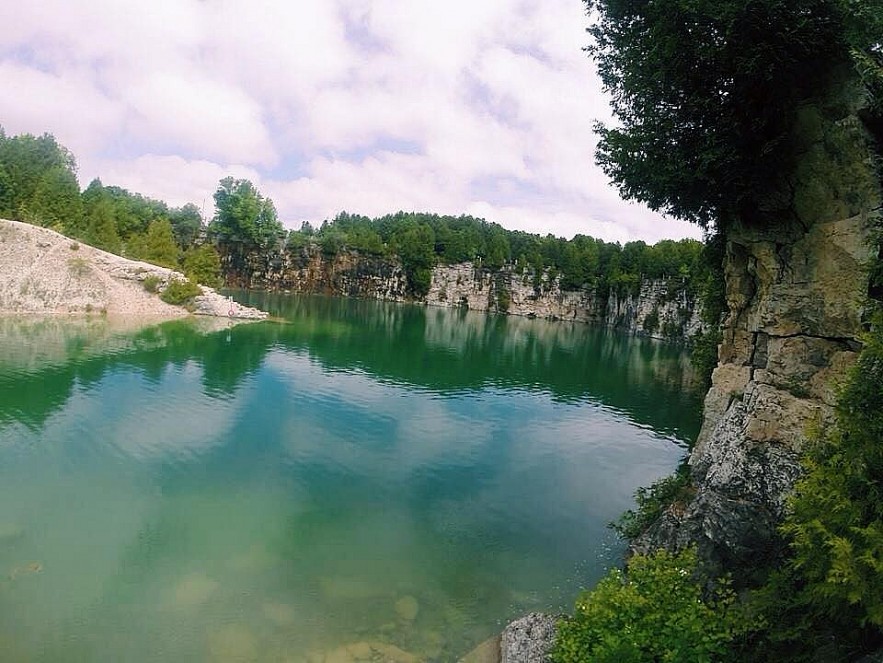 |
| Elora Gorge is one of the most beautiful and spectacular natural areas in the Grand River valley. With 22 metre high cliffs, riverside trails and scenic lookouts to the gorge, this park provides hikers with gorgeous views of the water below where kayakers and tubers make their way through the rapids. |
The stunning Elora Gorge Conservation Area is tucked away in the center of the Grand River Valley. The Grand River is flanked by limestone cliffs that rise 22 meters above the ground in this breathtaking natural area. Beyond the views, it provides guests with thrilling outdoor activities that will undoubtedly help them make lifelong memories.
Only during the summer months of May through October is the Elora Gorge Conservation Area accessible.
The Elora Gorge Conservation Area is conveniently located in the village of Elora and is about 25 kilometers north of Guelph. Highway 6 connects to Highway 401 to the south of Elora and Highway 400 to the north via Highway 9, providing access to Elora. The cost of admission to the conservation area includes parking at the gorge.
One of Ontario's most popular outdoor destinations, Elora Gorge Conservation Area offers a wide range of activities, including hiking, kayaking, tubing, and fishing.
Enjoy the surroundings as you walk along the 3 km of nature trails that run along the cliff's edge. You can be in awe of the landscape that the river's flow thousands of years ago from a number of picturesque vantage points along the trail. There are safety barriers on the trails to keep hikers safe. The Elora Cataract Trailway, a nearby 47 km long hiking and biking trail that follows an old Canadian Pacific rail line, is available if you want to extend your hiking excursion. It connects the Credit and Grand watersheds and is accessible all year.
You must take to the water in order to fully appreciate the Grand River and the drama of the high cliffs. Visitors love to rent kayaks or go tubing when the water is not too high. The Grand River's rapids provide a thrilling challenge for seasoned kayakers. However, the majority of visitors choose to rent a tube and experience the thrill of the river and its rapids that way (safety gear is provided and must be worn).
Fishing is another well-liked activity in the Elora Gorge. The region is well known for having some of the best brown trout fishing. Although swimming is prohibited within the gorge, you are welcome to take a dip at the nearby Elora Quarry Park. There is also a splash pad so that kids can enjoy the day. The enormous 200 square meter water playground offers kids countless opportunities to get wet. There is a little playground as well.
Consider spending the night at the Elora Gorge Conservation Area rather than visiting it for the day. Over 350 campsites, both serviced and unserviced, are available for reservations in advance.
Housing: $44 per night, shared
Free food and beverages
$25 for activities
Elora Gorge is situated inside Elora Gorge Conservation Area, about 90 minutes outside of Toronto. After hiking on one of the guided trails, spend money on a tubing trip through the 22-foot-drop gorge. Camp with friends for $44 per night at a standard campsite (divided among friends). You don't wish to remain overnight. For just $7, you can enter the conservation area for the day.
8. Tobermory, Ontario
 |
| Photo: TripAdvisor |
The Saugeen Ojibway Nation's ancestral homeland includes the small town of Tobermory, which is situated at the northernmost point of the Bruce Peninsula. The Saugeen Ojibway nations lived on the Bruce Peninsula until European colonization there in the middle of the 19th century; their earliest ancestors arrived there as early as 7500 years ago. It belongs to the Northern Bruce Peninsula municipality. It is located 190 miles (300 km) northwest of Toronto. Tobermory is 100 kilometers (62 miles) south of Owen Sound, which is connected by Highway 6. Owen Sound is the closest city to Tobermory.
Port Collins Harbour was originally given that name by naval surveyor Henry Bayfield. Due to similar harbor conditions, it was renamed after Tobermory, the largest town on the Isle of Mull in the Scottish Inner Hebrides (Scottish Gaelic: Tobar Mhoire).
Due to the abundance of shipwrecks in the area's waters, particularly in Fathom Five National Marine Park, the area is referred to as the "fresh water SCUBA diving capital of the world". Popular vacation spots include Tobermory and its environs. North of Bruce Peninsula National Park is where the town is located.
Tobermory and Manitoulin Island in Lake Huron are connected by the MS Chi-Cheemaun passenger-car ferry. Tobermory has twin harbours that are locally known as "Big Tub" and "Little Tub," and it is also the northernmost point of the Bruce Trail. The largest freshwater natural harbor in Canada is Big Tub Harbour.
Typically, Tobermory is a couple of degrees colder than Toronto. The majority of the town's businesses are open from May through the long weekend surrounding Thanksgiving in October, and are closed for the other seven months of the year.
$100 per night for lodging (divided four ways)
$8 for food and beverages
$8 for activities
Georgian Bay and Lake Huron are both within easy driving distance of Tobermory. Both Fathom Five National Marine Park, regarded as Canada's shipwreck capital, and its picturesque grotto in Bruce Peninsula National Park (where you can also camp), are well-known attractions in this area. If you're an experienced diver, you can sign up to dive for $5 per day or snorkel for free. Although camping is a cheap option, there are many affordable Airbnbs as well, the majority of which can be shared by many people to keep costs low.
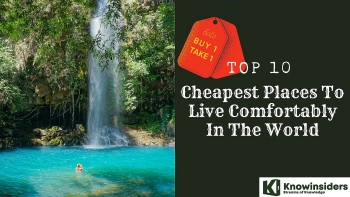 Top 10 Cheapest Places In The World To Live Comfortably Top 10 Cheapest Places In The World To Live Comfortably |
9. Cypress Hills, Saskatchewan
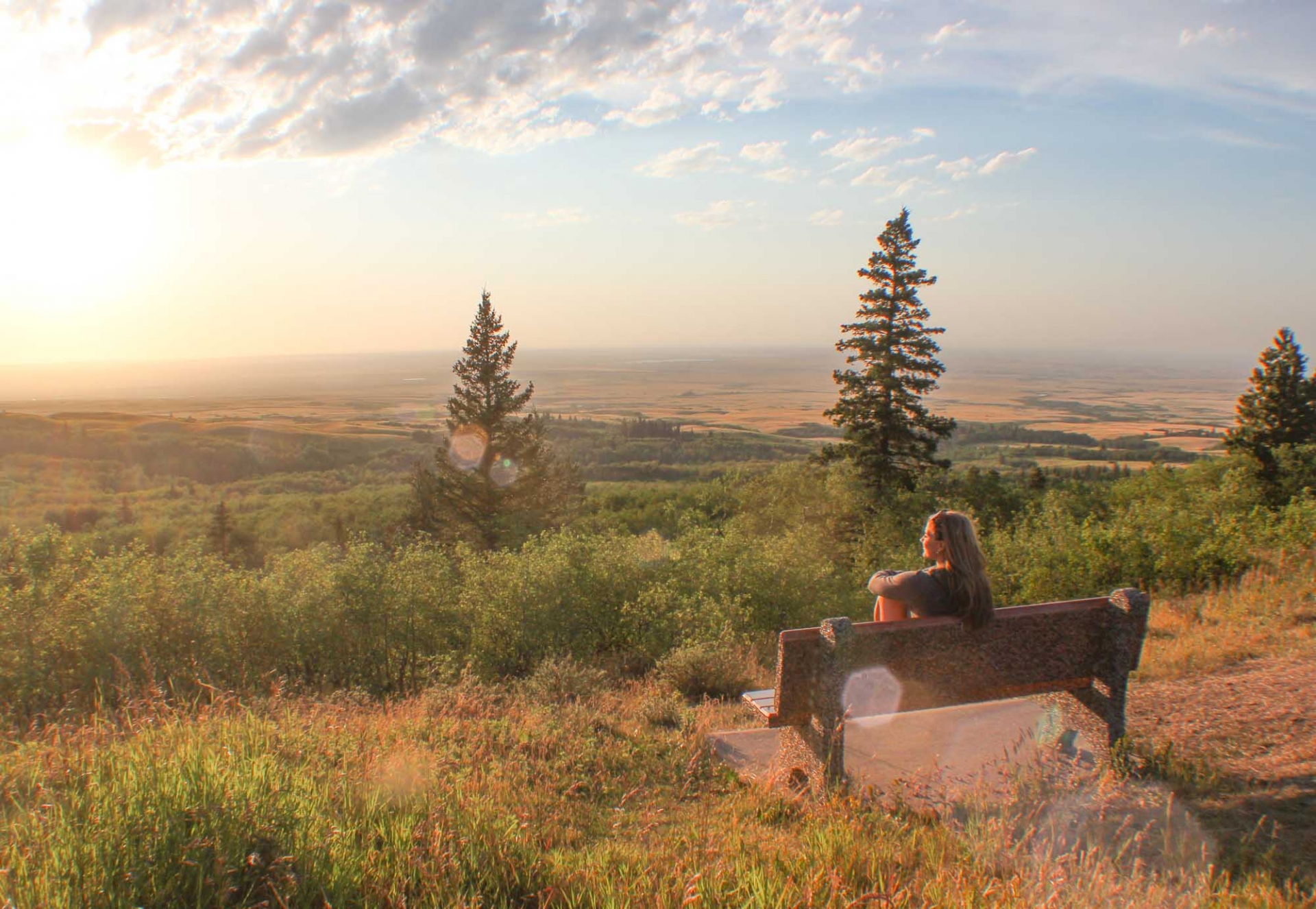 |
| Photo: The Lost Girl's Guide |
Cypress Hills, the highest point of land in Saskatchewan, is a vast plateau once encircled by glaciers. It has extensive forests, deep valleys, and slow-moving streams.
The region has a lengthy and colorful history that predates both the establishment of the province and the territories. People have been camping in these hills for centuries, and it has always been known as a gathering place.
Today, you can zipline through the trees, fly fish in the same streams, and camp in the same hills. Rare wildflowers, 220 bird species, and 47 mammal species, including moose, elk, deer, and antelope, can be found in the park.
Cypress Hills Interprovincial Park's Center Block is situated 156 kilometers southwest of Swift Current, 130 kilometers east of Medicine Hat, and 27 kilometers south of Maple Creek. Consul, Frontier, Eastend, and Shaunavon are nearby towns.
Hotel: $5 per night
Drinks and food cost $26.
Activities: No cost
Bordering Alberta and Saskatchewan, the Cypress Hill Interprovincial Park is a distinctive location with a lot to offer. Visit the nearby prairie-themed heritage village of Val Marie, or camp out in Grasslands National Park and take in what are thought to be Canada's darkest skies (some people have even seen the Northern Lights there).
10. Algonquin, Ontario
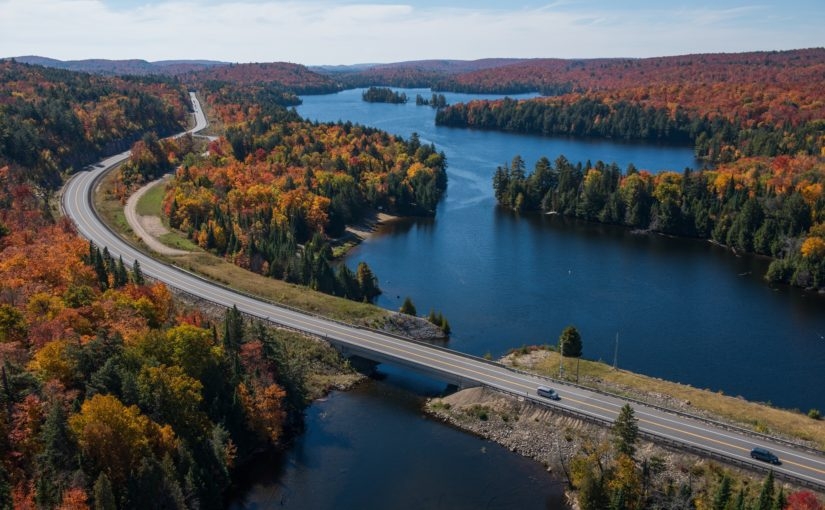 |
| Photo: Ontario Parks |
Between Georgian Bay and the Ottawa River in Ontario, Canada, Algonquin Provincial Park is a large park that is mostly contained within the Nipissing District's Unorganized South Part. It is Canada's oldest provincial park, having opened in 1893. Since it was first established, the park has grown to approximately 7,653 km2 (2,955 sq mi) in size. The park is adjacent to a number of smaller, administratively distinct provincial parks that safeguard the region's significant rivers, resulting in a larger overall protected area.
Algonquin is one of the most visited provincial parks in the province and the nation due to its size and proximity to the major cities of Toronto and Ottawa. The Trans-Canada Highway avoids the park to the north, while Highway 60 passes through the park's southern end. The park contains more than 2,400 lakes and 1,200 kilometers of streams and rivers. Canoe Lake and the Petawawa, Nipissing, Amable du Fond, Madawaska, and Tim rivers are a few famous examples. These resulted from the glaciers' retreating during the last ice age.
In terms of the "border" between Northern Ontario and Southern Ontario, the park is regarded as a component. The park is located in a zone where southern deciduous forest and northern coniferous forest are merging. A rare diversity of plant and animal species can be found in the park thanks to the diverse range of environments and the unusual combination of forest types. Additionally, it's a crucial location for studies on wildlife.
In 1992, Algonquin Park was designated as a National Historic Site of Canada in honor of its contributions to the development of park management, the creation of visitor interpretation programs that were later adopted by national and provincial parks across the nation, the role it played in encouraging artists to create works that gave Canadians a stronger sense of their nation, and its historic buildings, including lodges, hotels, cottages, camps, and entrance gates (the West Gate was designed by British architect
The only designated park in the province of Ontario that permits industrial logging within its boundaries is Algonquin Park.
Hotel: $13 per night
Free food and beverages
Activities: No cost
A lover of nature must visit Algonquin Park. Algonquin is a well-liked camping location that provides a variety of accommodations for both novice and experienced backcountry campers. It is also a budget-friendly option because you can bring your own food and drink, and once you're there, the park is at your disposal. Camp, portage, go hiking, go swimming, or just take in the beauty of nature all around you.
Budget travel in CanadaIt's crucial to have a budget because traveling in Canada is not the most affordable option. Budget up to $100 Canadian per day. This covers a single night's lodging at a campground, hostel, modest Airbnb, or low-cost hotel, as well as food from fast-food joints or supermarkets, transportation, and some attractions. In addition to having higher prices than in the US and the majority of Europe, Canada also has another distinction. The majority of your bills, including those for clothing, lodging, and dining out, will be subject to Canadian taxes. These taxes could result in a 15% price increase. Canadian Arctic Prices will be higher in northern destinations like Yukon, the Northwest Territories, and Nunavut, so you should adjust your budget accordingly. Gas is more expensive throughout the Territories than it is in the southern Provinces. Count every dollar you spend. For extended travel, keeping track of your finances is especially crucial. Record every dollar you spend in a pocket journal. Every time you go over your spending limit, make it up the following day. You won't have to be concerned about running out of money before your trip is over this way. Look for affordable lodging. Your daily expenses are probably most heavily weighted toward lodging. Thankfully, that is also where you can save the most money. Your cheapest option is to go camping. Find Free Campsites or stay in Provincial Parks if you're traveling by car. Consider staying in a small, locally run inn, a hostel, an Airbnb, or a budget hotel on the outskirts of the city. To reduce costs, consider using CouchSurfing or homestays. Nunavut has no connecting roads at all, and Northwest Territories has limited access to the road network. Both flying and food are very expensive in Northern Canada. Off-season travel The best time to travel to Canada is from mid-May to late June. Prices are fair because there aren't many tourists at that time. Unfortunately, until Victoria Day, which is the third weekend in May, the majority of tourist attractions and visitor centers will be closed. Indian summer, when the forests turn red and gold, occurs in September and October. Most of September typically still has nice weather. Although there may be snow on the ground in many places, autumn is a great time to travel in Canada. Prices are lower and there are fewer tourists during that time. Spend less on transportation In Canada, transportation expenses are high. Due to the vast size of the nation, traveling across the country may require costly airfare, train tickets, or gas. Limiting the scope of your trip and visiting only a particular area of Canada, such as the West Coast, the Toronto/Niagara region, Montreal, Quebec, or the Maritime provinces, can help you save money on transportation. The most flexibility is provided by renting a car, but purchasing a car may be less expensive and is frequently chosen by frugal travelers in Canada. Sadly, Greyhound buses ceased providing service in Western Canada in 2018. Since then, new bus companies have emerged, so long-distance bus travel is still an option in Canada. |
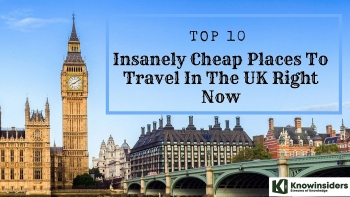 Top 10+ Insanely Cheap Places To Travel In The UK Right Now Top 10+ Insanely Cheap Places To Travel In The UK Right Now The United Kingdom is a beautiful destination to visit and explore. If you are on a budget and looking for cheap places to travel in ... |
 Top 10 Cheapest Places In The World To Live Comfortably Top 10 Cheapest Places In The World To Live Comfortably There are many affordable and cheap places that can give you a comfortable life without worrying about the money, which is listed in the article ... |
 Top 10 Cheapest Supermarkets in the US Right Now Top 10 Cheapest Supermarkets in the US Right Now What do you think are the cheapest supermarkets in the US? Here are our 10 cheapest grocery stores with lower prices to save money. |
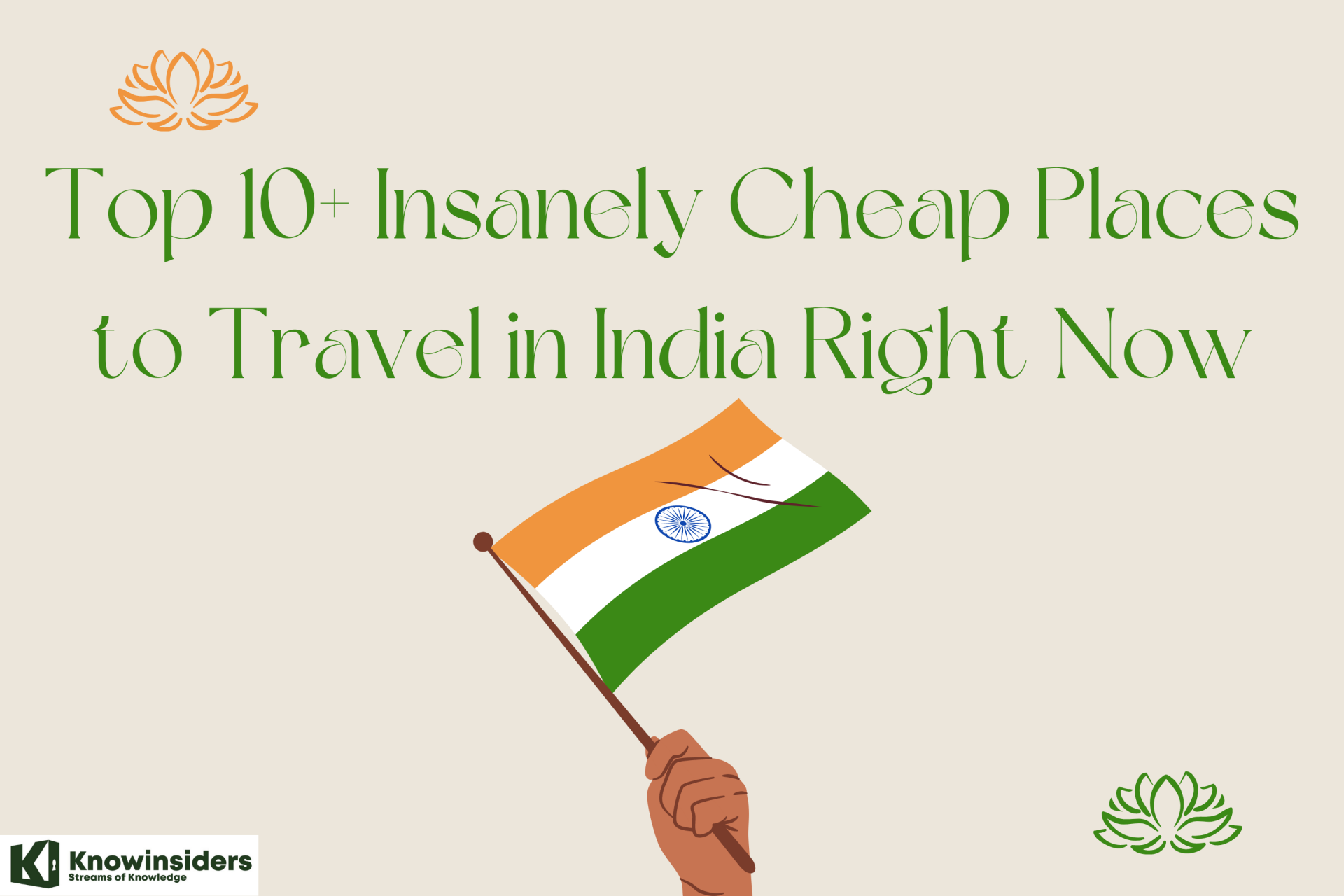 Top 10+ Insanely Cheap Places to Travel in India Right Now Top 10+ Insanely Cheap Places to Travel in India Right Now There are plenty of absolutely gorgeous cheapest places in India that you can go to with almost nothing in your wallet and still have the ... |


























